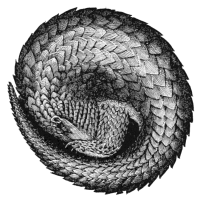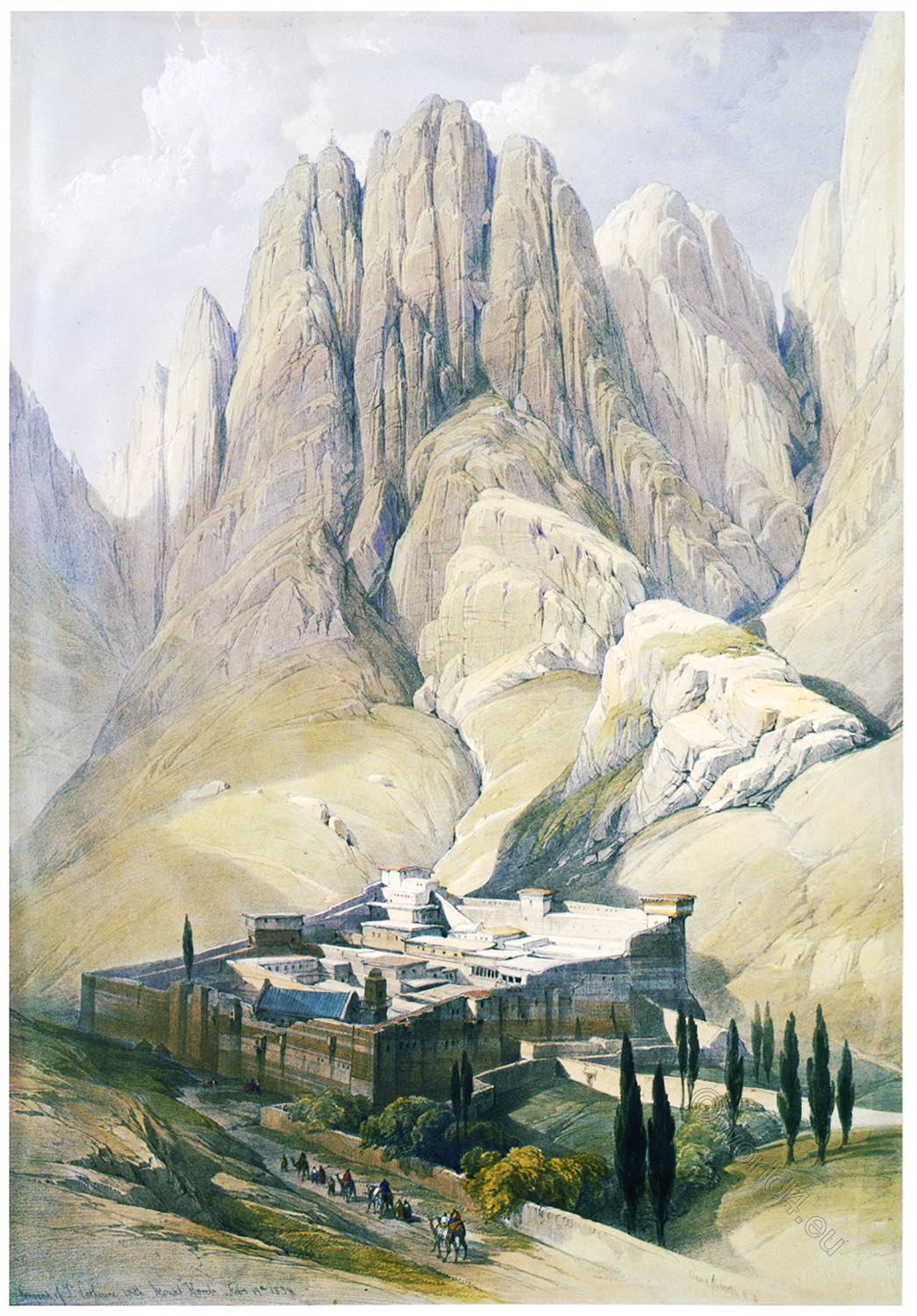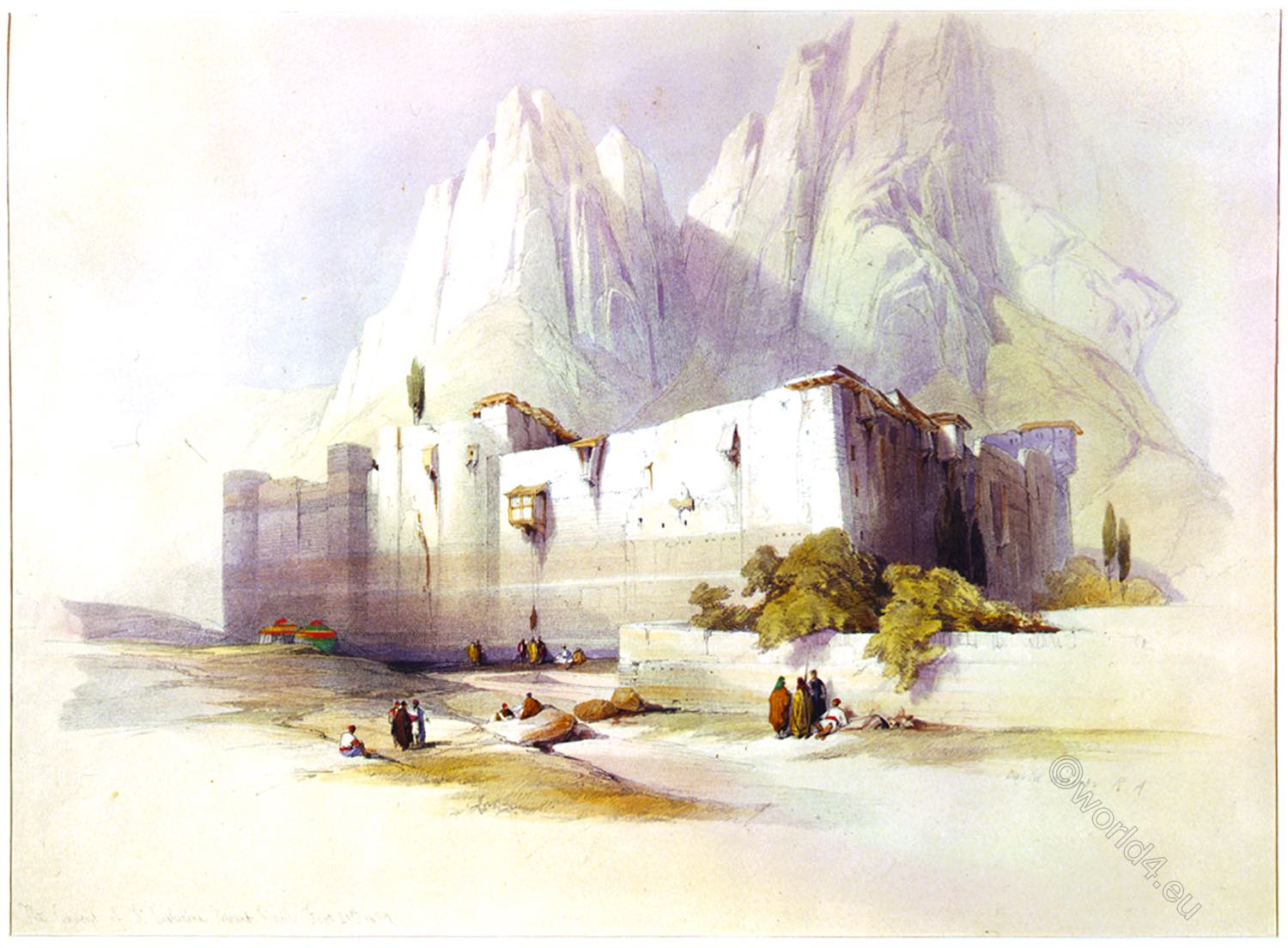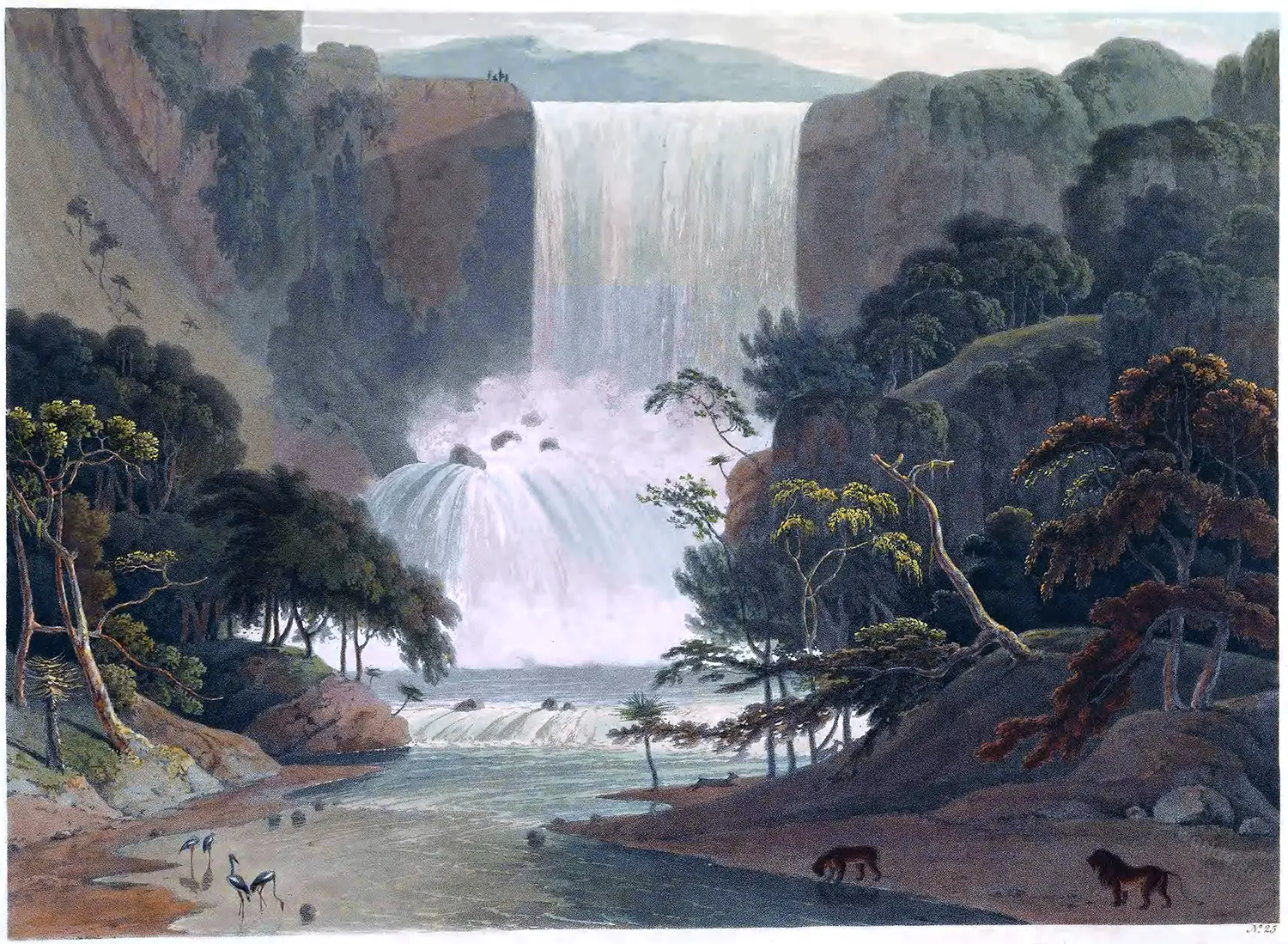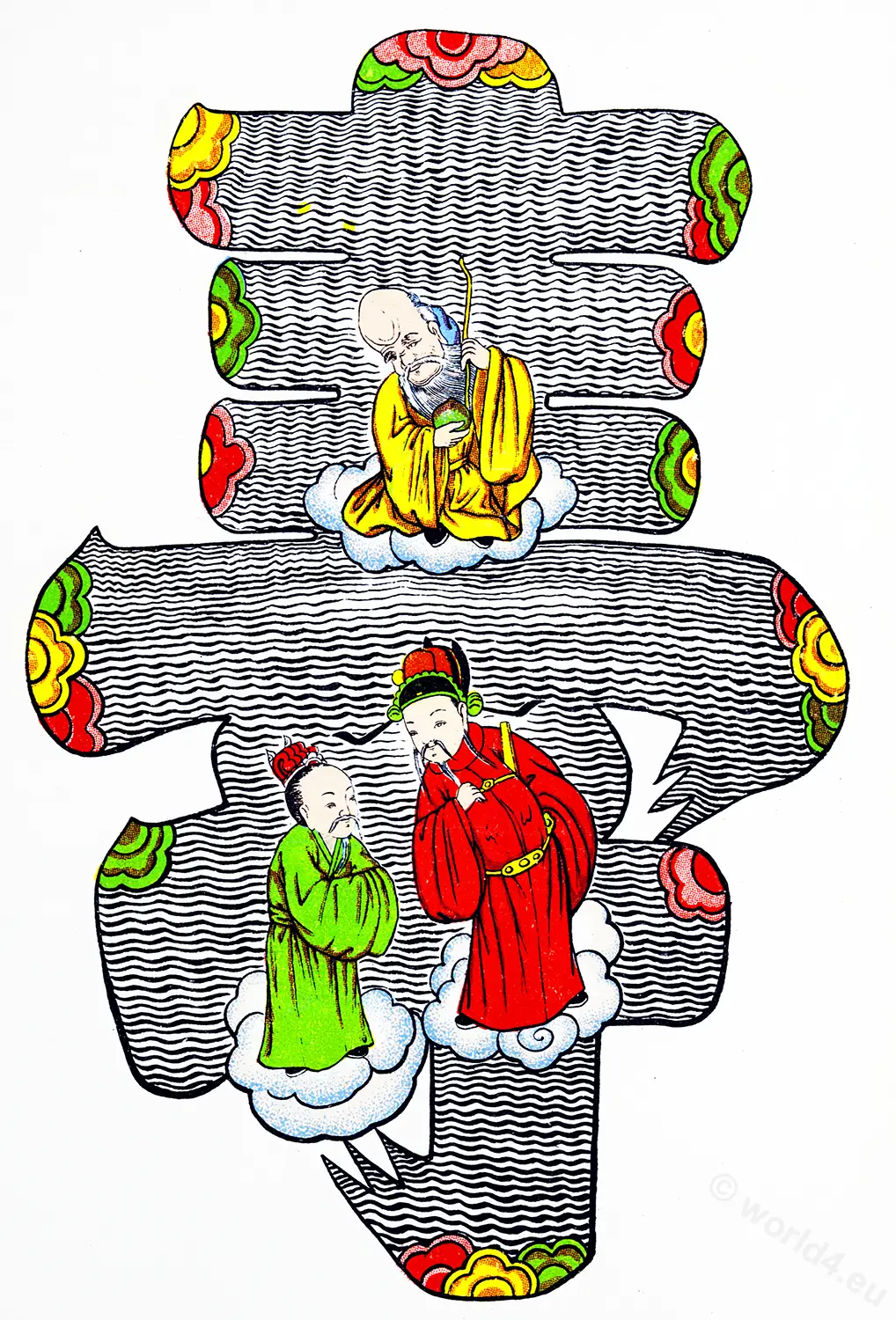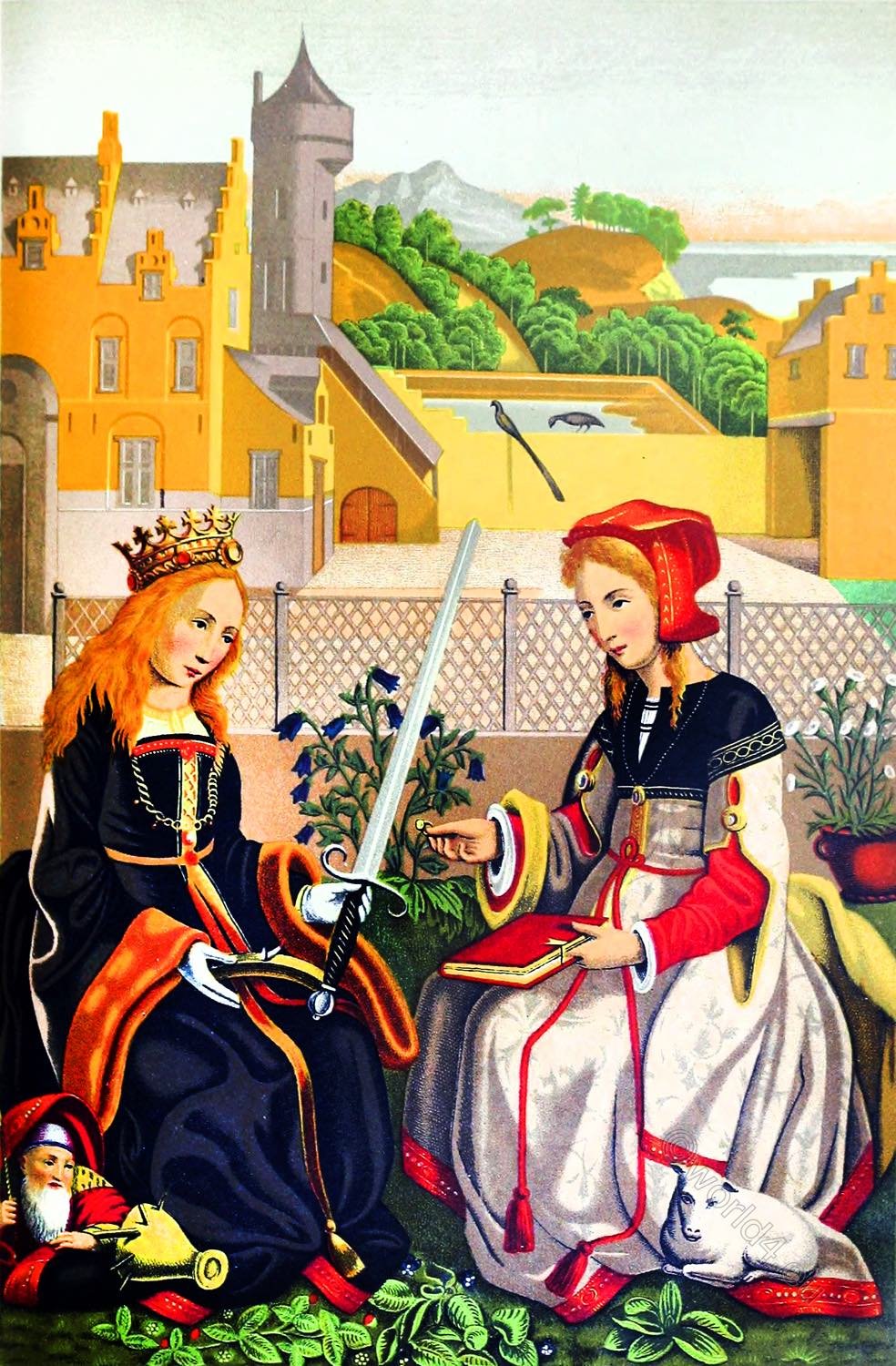WORLD OF WONDERS.
CHAPTER I.
LONGEVITY OF ANIMALS
by Catherine Gore.
Most scholars are familiar with the quotation “cervi dicuntur diutissime vivere,” *) rendered proverbial the longevity of the stag. Among birds, crows and parrots have also been said to attain miraculous length of days; among fishes, the carp and pike ; among reptiles, the tortoise. But modern investigation has sufficiently proved that the number of centuries, variously assigned as the natural age of these birds, beasts and fishes, was, in the first instance, the invention of poets and fabulists, carelessly adopted as authentic by lovers of the marvellous. It is now ascertained that aloes frequently flower three times in a hundred years, and that three generations of the stag are included within the same space of time.
*) deer are said to live very long
Hesiod, an ancient Greek poet whose works have only partially reached us, was the first to institute a comparative inquiry into the age of the crow and the stag. Hesiod assigns eighty-six years as the average span of human life attains eight hundred and sixty-four years, and the crow thrice as many. Towards the stag, he is still more liberal; declaring that these animals have been known to attain their thirty-fifth century. Considering the age we assign to the world itself when Hesiod flourished in it, no great experience as to the average existence of so sempiternal an animal could have influenced his opinion.
According to many ancient Writers besides Hesiod, the stag is the longest lived of animals; and the Egyptians have adopted it as the emblem of longevity. Pliny relates that one hundred years after the death of Alexander, several stags were taken in the different forests of Macedonia, to whose necks that great monarch had, with his own hand, attached collars. This extension of existence is, however, scarcely worth recording, in comparison with the instance commemorated by French historians, of a stag taken in the forest of Senlis, in the year 1037; having a collar round its neck on which was inscribed, “Caesar hoc me donavit.” *)
*) Caesar forgave me
A miraculous interpretation was assigned to this inscription, which has consequently formed the ground-work of a popular error in France. The “Caesar” of the legend was admitted, without further examination, to be Julius Caesar, thereby allotting ten centuries as the age of the animal; nay, seventy-seven years more, seeing that Julius Caesar conquered Gaul forty-two years before the birth of Christ. Nevertheless since the days of Julius, the title of Caesar had been bestowed on a sufficient number of imperial potentates to explain the inscription on the collar upon more rational grounds: the Caesar who had thus adorned the stag being in all probability its contemporary. But this was too simple an interpretation to be acceptable to those wonder-seeking times.
Aristotle decided the age of the stag, not from the showing of poets and traditions, but from the indications of experiment. Having dissected a considerable number of these animals, he pronounced their ordinary age to be was from thirty to thirty-six years. Buffon was of a similar opinion, which has been adopted by most succeeding naturalists. It has been established as a law of comparative physiology, that the life of a mammiferous animal is in proportion to its period of gestation, and the duration of its growth. The sheep and goat, who bear their young five months, and whose growth lasts two years, live from eight to ten.
The horse, which is borne ten months, and whose growth requires from five to six years, lives from thirty to forty. We are, of course, speaking of the horse in its natural state, uninjured by premature and excessive labour. When submitted to the hands of man, the noble animal is condemned to premature old age, by the application of spur and thong before it attains sufficient strength for the unnatural speed it is compelled to attempt, and the burthens it is forced to bear. Nor, even under these circumstances, is it allowed to attain the span of life assigned by nature ; the hand of the knacker being put in request to end its days, the moment its services cease to be profitable to its master.
The camel, which is borne ten months, and requires four years for its bodily development, usually attains the age of fifty. The elephant, requiring a year’s gestation, attains the climax of its growth at thirty, and lives to a hundred. The gestation of a stag, therefore, being but of eight months, there is no reason to infer a deviation in its favour from the laws governing the nature of all other animals of the same genus.
“The stag,” says Buffon, “whose growth requires six years, lives from thirty to forty. The prodigious age originally ascribed to this animal, is a groundless invention of the poets, of which Aristotle demonstrated the absurdity.”
A variety of instances of the miraculous longevity of animals may be found in the works of the early German naturalists. It is related in the collection of Voyages and Travels of Malte Brun, on the showing of these authorities, that the Emperor Frederick II. having been presented with a singularly fine pike, caused it to be thrown into a pond adjoining his palace of Kaiserslautern, after affixing to it a collar bearing the the following Greek inscription: “I am the first fish cast into this pond by the hands of the Emperor Frederick II.; October 5th, 1230.”
After remaining two hundred and sixty years in the pond, the pike was taken in 1497, and carried to Heidelberg, to be served at the table of the Elector Philip; when the collar and inscription were subjected to the examination of the curious. The pike, at that time, weighed three hundred and fifty pounds, and was nineteen feet in length—a miraculous fish in every respect; for how are we to suppose that an inscription upon an elastic collar would otherwise remain legible at the close of several centuries? This story is evidently one of the marvels that figure so profusely in the chronicles of old Germany during the middle ages.
It has, however, often been asserted that aquatic animals are longer-lived than others, from being cold-blooded, and losing nothing from transpiration though, from their peculiar nature, the fact is very difficult of demonstration. Fordyee made some curious experiments upon the tenacity of life in fishes; by placing gold fishes in a variety of vessels filled with water; which, at first, he refreshed every day; then, every third day, with which refreshment, and without other nourishment, they lived for fifteen months. He next distilled the water; increased the proportion of air in the vessels; and closed the apertures, so that no insect could possibly penetrate. Nevertheless, the fish lived as before, and were in good condition.
The experimentalist now decided that the decomposition of the air afforded them sufficient nutriment by this theory invalidating the proverb ‘that it is impossible to live on air.’
Without impugning the authenticity of these experiments, or the easy sustenance of fishes, we may be permitted to observe that a variety of circumstances are unfavourable to the fact of their miraculous longevity. In the first place, their organisation, especially that of the carp which is supposed to be one of the longest-lived of fishes, is peculiarly delicate; and the muscular effort to move in an element eight hundred times heavier than atmospheric air, must be apt to exhaust the energies of life. Such are the suggestions of common sense; too often unavailing against the marvels of tradition, accepted by the credulity of mankind.
The Parisians delight in boasting of the age of the venerable carp in the reservoirs at Fontainebleau and Chantilly; the former especially, as contemporary with Francis I. Other credulous persons declare that there exist gigantic carp many centuries old, in the water beneath the Cathedral of Strasbourg a fact easily asserted because impossible to disprove.
With respect to the tame old carp at Fontainebleau, which come to the surface of the water to be fed by every visitor to that curious old palace, the only grounds for asserting their great age is the inconclusive fact, that there were tame old grey carp in the moat of Fontainebleau in the reign of Francis I, as at the present time. But who is to prove that they are identical? There were also troops and courtiers at Fontainebleau at both epochs, whom it would be just as reasonable to assert were the same persons. The only difference is that the generations of men are visibly renewed; while the carp in the old moat slip away unnoticed, and are succeeded by a younger fry.
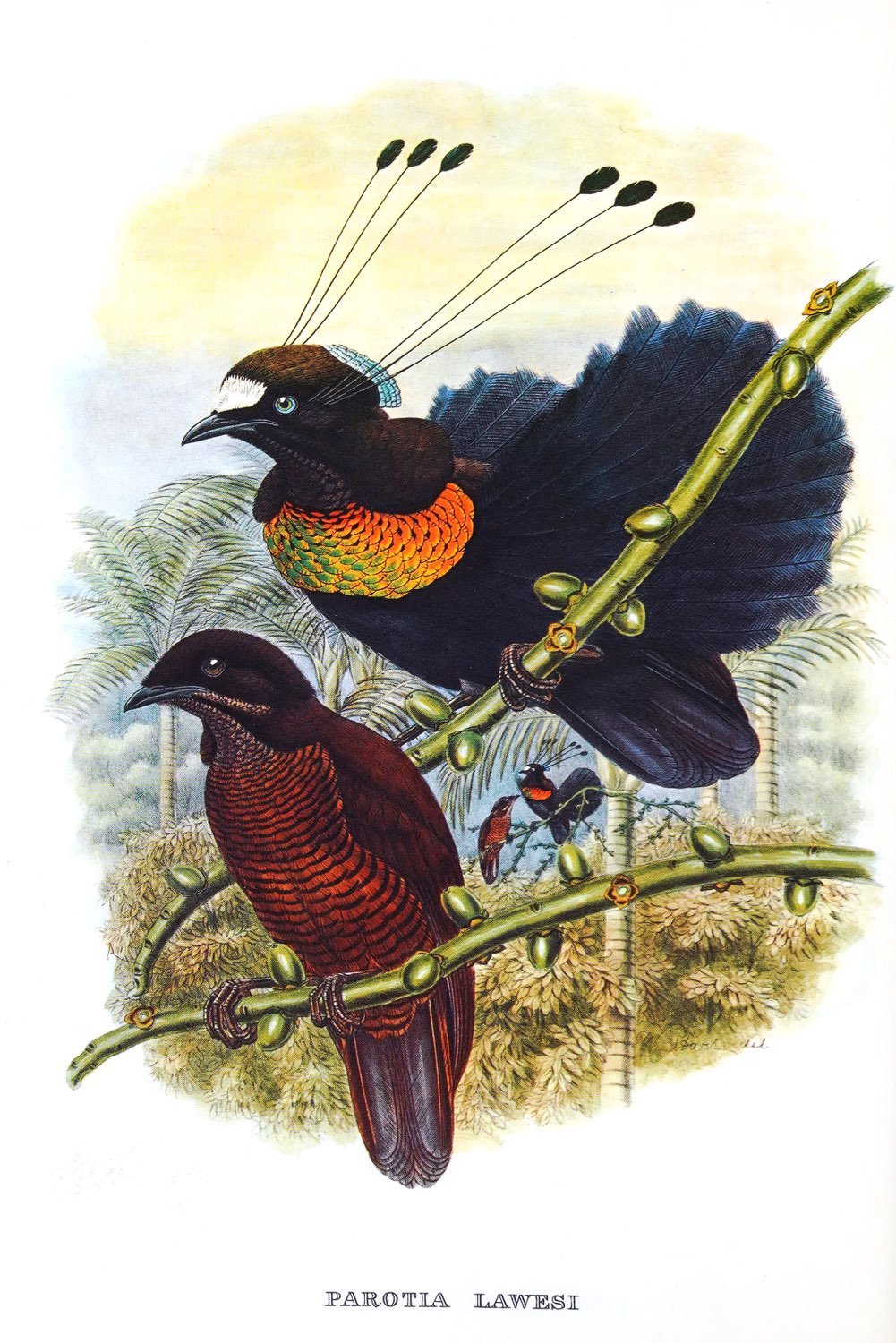
The longevity of certain species of the feathered kind has been just as much exaggerated as that of the stag and the carp. Willoughby states in his work on Ornithology, that a friend of his possessed a gander eighty years of age; which in the end became so ferocious that they were forced to kill it, in consequence of the havock it committed in the barn-yard. He also talks of a swan three centuries old; and several celebrated parrots are said to have attained from one hundred to one hundred and fifty years.
The experiments of able naturalists afford the best answer to such statements. According to the best established authorities, pigeons, fowls, and ducks, live, in a natural state, from ten to twelve years. Magpies, crows, and jays, evince symptoms of caducity at the same age. Professor Hufeland, of Jena, who has devoted considerable time and attention to the study of the duration of life, assures us that the great eagle, and other birds of the larger kind, such as the pelican and ostrich, are very long lived and of vigorous constitution. Specimens of the eagle tribe have been known, however, to survive in a menagerie upwards of a hundred years.
Hufeland relates that a Mr. Selwand, of London, received in 1793, from the Cape of Good Hope, a falcon wearing a golden collar inscribed “To His Majesty, King James of England, 1610.” The bird was supposed to have belonged to James I., and having escaped from its keepers, in order to avoid recapture, to have traversed Europe and Africa, to end its days in a state of nature among the Hottentots! Destiny, however, was not to be defied; and the prisoner was recaptured in its old age, and sent back to England. This incident probably originated in a hoax upon the credulity of Mr. Selwand, practised by one of his colonial correspondents. Moreover, Hufeland, after publishing his conviction of the prodigious longevity of the eagle tribe, was himself very likely to become the object of one of those mystifications, for which the supporters of new theories are considered fair game.
Credulity is unfortunately a weakness common to the human race; and a tendency to exaggeration is scarcely less universal. Between the two failings, monstrous stories obtain circulation; and as it is easier to assent than examine, the world becomes overrun with errors and prejudices. A curious anecdote related from mouth to mouth, becomes exaggerated into a miracle. Thus, as regards the longevity of parrots, a bird of this species which happens to survive three generations of the same family, though the period may not exceed thirty years, is talked of in the circle of their acquaintance as a Nestor or Methuselah; till, at last, from exaggeration to exaggeration, its age becomes converted into a miracle. No one, however, can personally attest the age of a parrot beyond fifty or sixty years. All the rest must be hearsay.
Among curious examples of longevity in animals, the dog of Ulysses is cited, by many ancient authors, for the intelligence displayed in his recognition of his master after twenty years’ absence. A mule, which lived to the age of ninety years, at Athens, has also been frequently cited.
The historian, Mézéray *), relates, on the authority of Flodard, that Loup Asnard, Duke of Aquitaine, on coming to do homage to Raoul, King of France, about the beginning of the tenth century, appeared before the monarch mounted on a horse a hundred years old. Such exceptions, however, even if authentic, tend no more to prove the longevity of dogs, horses or mules, than the incontestible fact that certain men, even in modern times, have survived to the age of a century and a half, tend to establish that period as the span of human existence.
*) François Eudes de Mézeray (1610–1683) was a French writer and historian.
Source:
- A world of wonders, with anecdotes and opinions concerning popular superstitions by Albany Poyntz (Catherine Gore). London, R. Bentley, 1845.
- Images Birds of Paradise: Westermanns Monatshefte. Publisher Braunschweig, G. Westermann. 1856.
- Paradisea Sanguinea
- Paradisea Papuana
- Paradisea Raggiana
- Parotia Lawesi
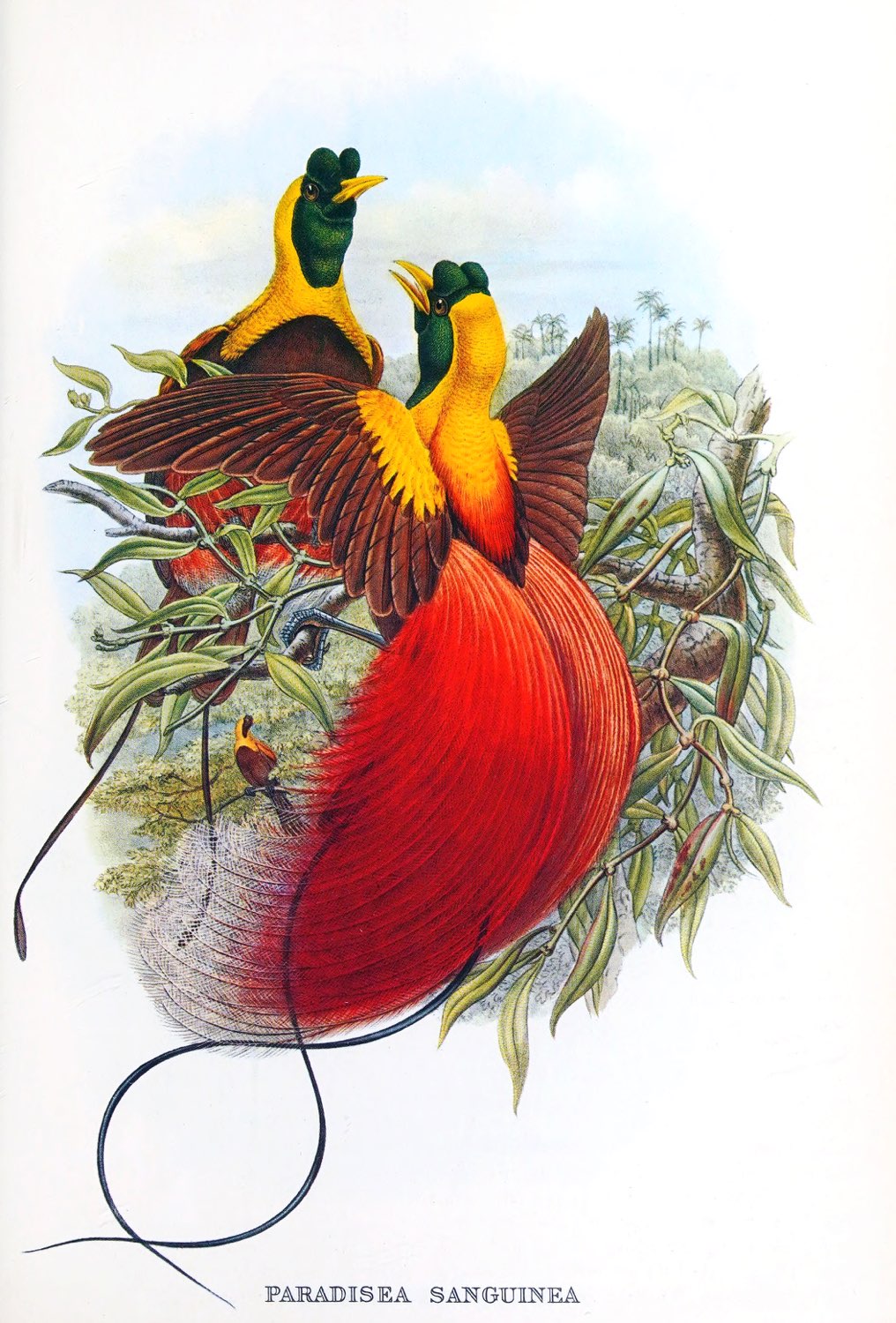
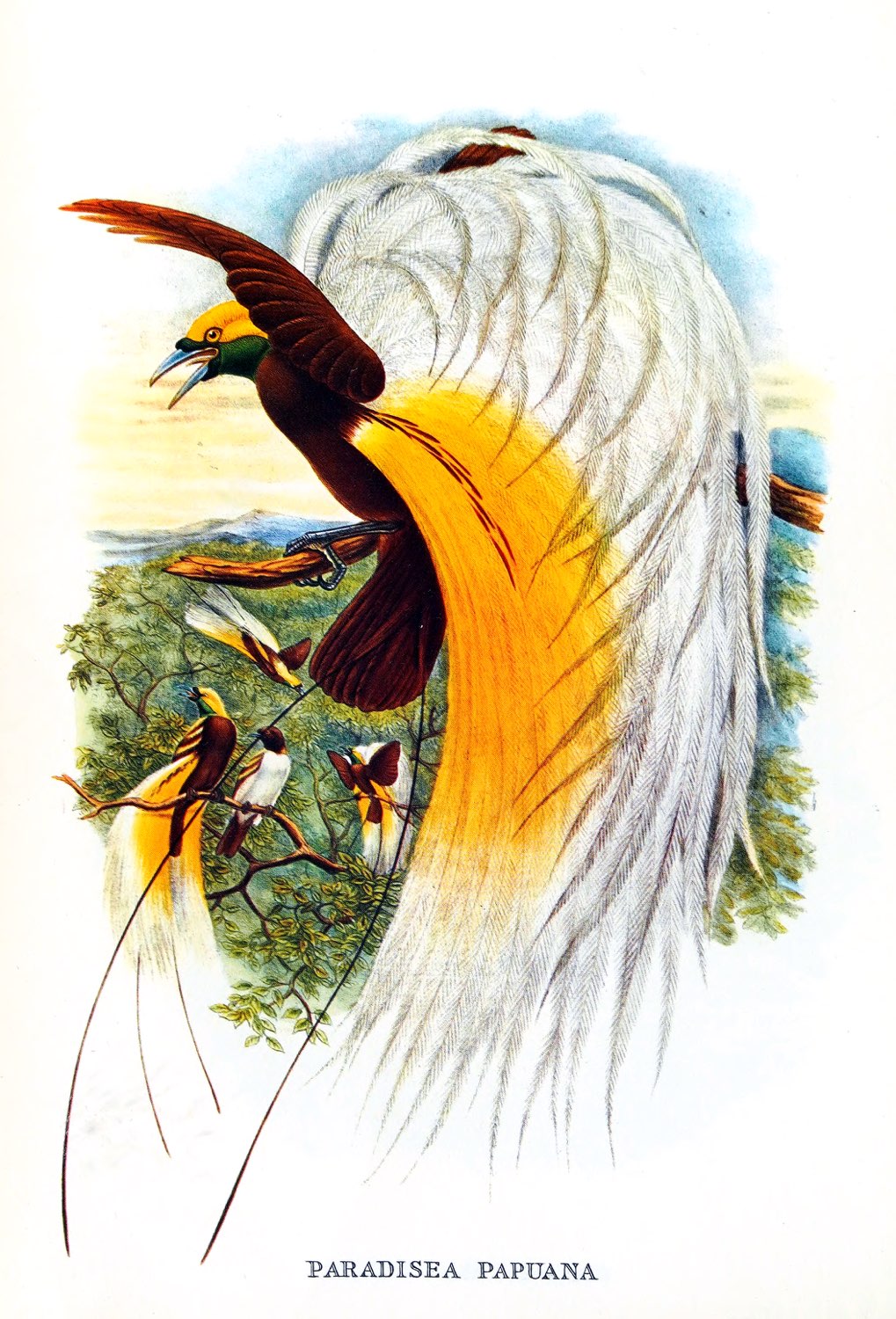
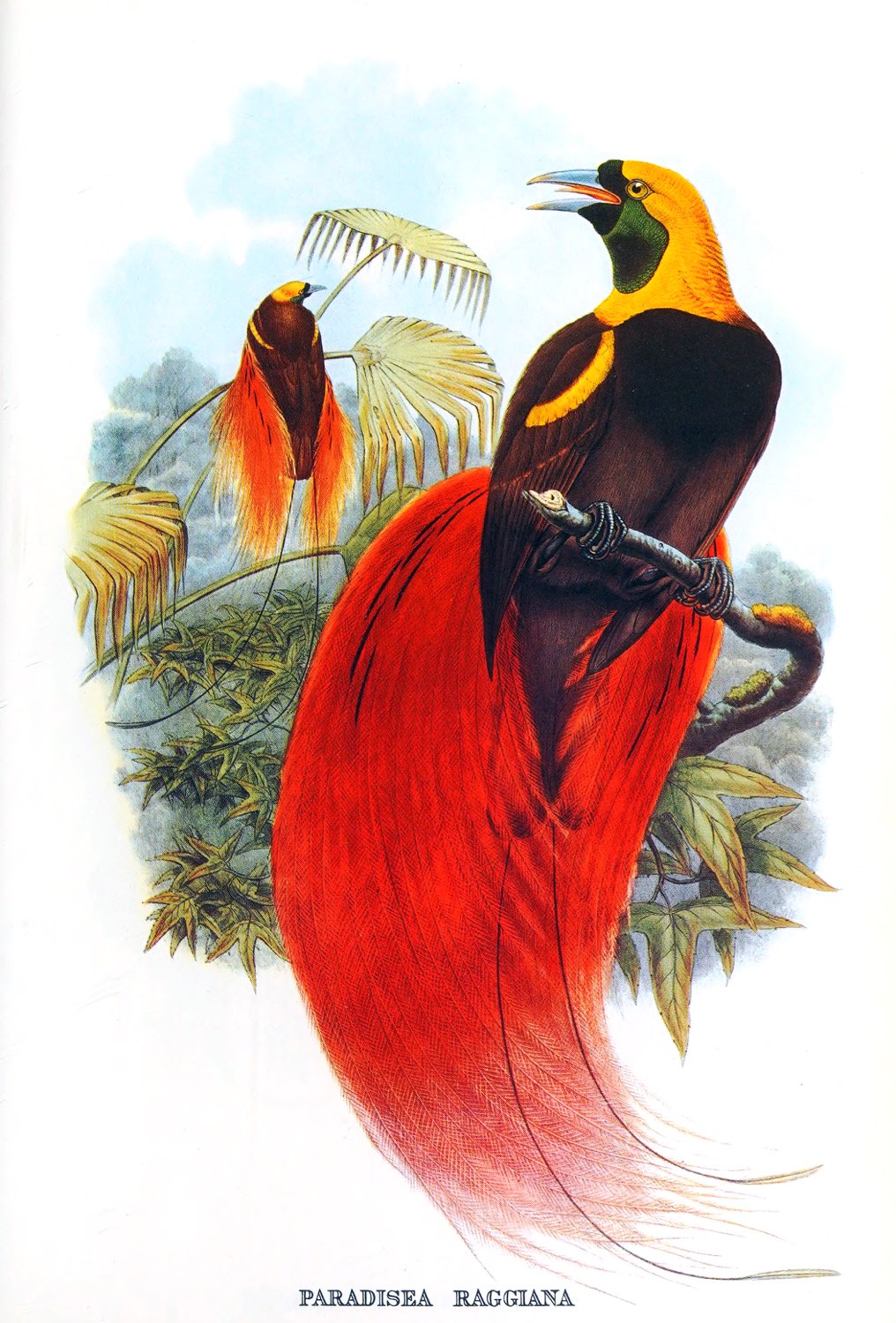

Related
Discover more from World4 Costume Culture History
Subscribe to get the latest posts sent to your email.


